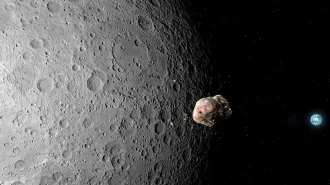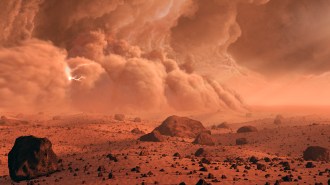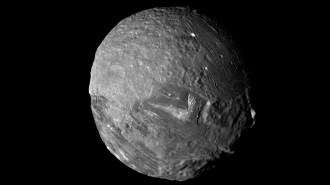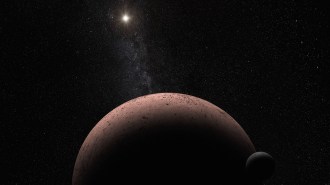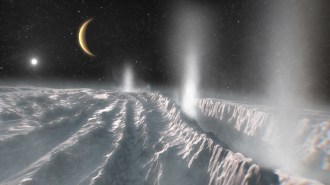This star offers the earliest peek at the birth of a planetary system like ours
The surrounding gas and dust might be producing the first bits of planets

The swirling disk of gas and dust (center black dot) around a baby star might be birthing a solar system, according to a new study. Farther from the star, called HOPS 315, carbon monoxide gas (orange) blows away in a butterfly-shaped wind and silicon monoxide gas (blue) is expelled in a jet of disk material.
ALMA (ESO, NAOJ, NRAO), McClure et al./Nature 2025
